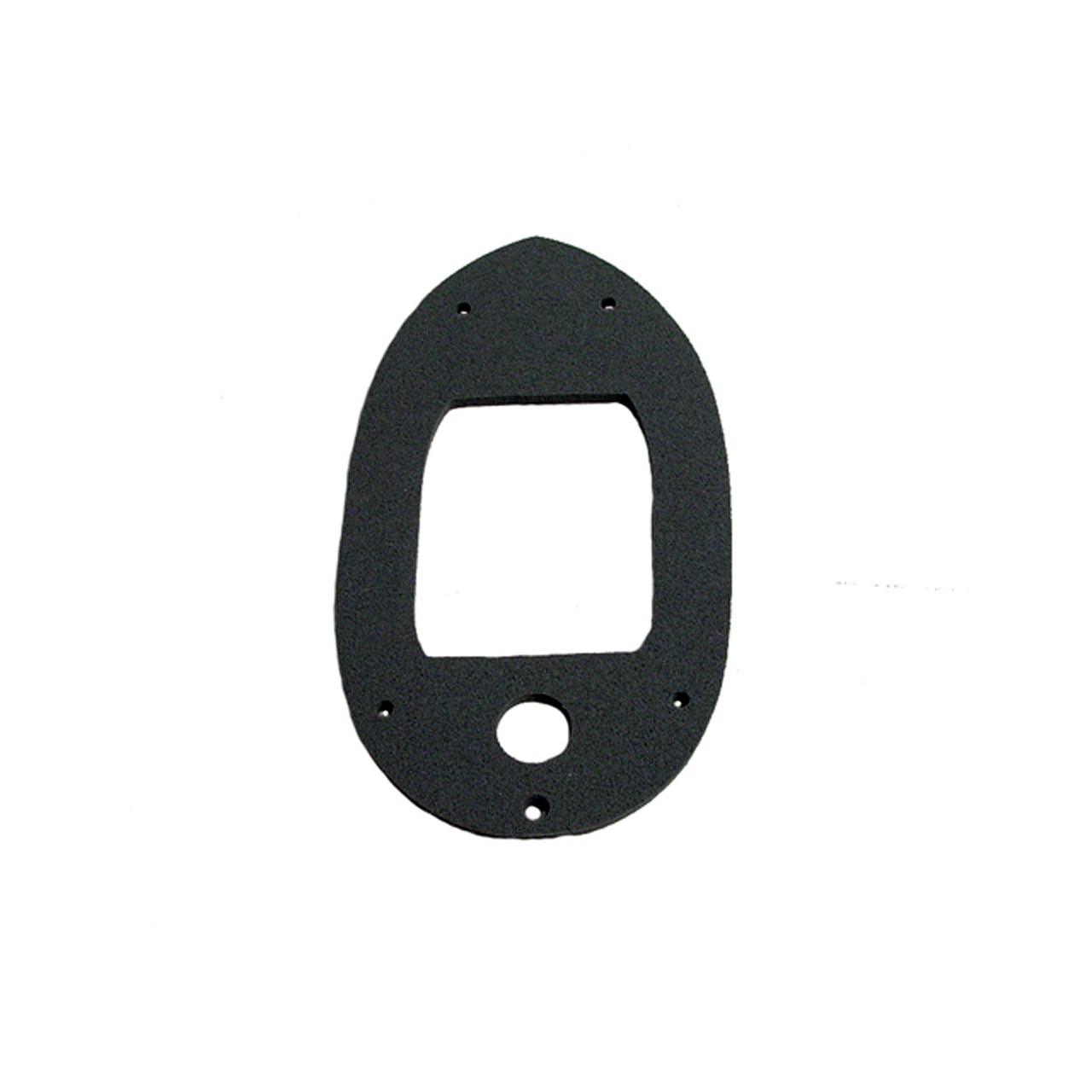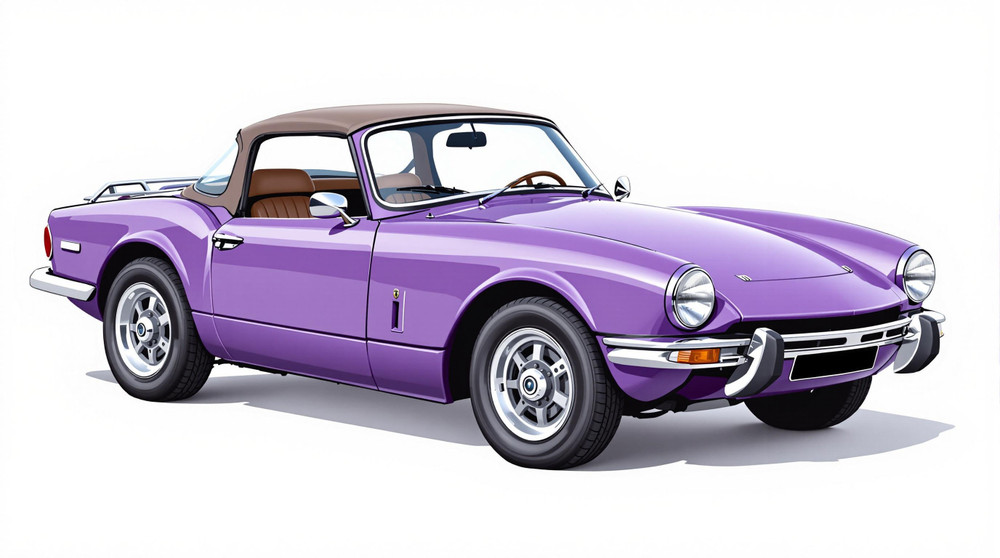Image of 1970 Triumph Spitfire, Note: These illustrations use artistic license and may differ from actual historical models.
Performance Metrics
Fundamental Metrics
Emotional Appeal
MMP Rating
| Engine Specifications | |
|---|---|
| Engine: | Inline 4 |
| Displacement: | 1.3L (1296 cc) |
| Horsepower: | 63-75 hp |
| Torque: | 67 lb-ft |
| Compression Ratio: | 9.0:1 |
| Ignition System: | Electronic |
| Cooling System: | Water-cooled |
| Performance Specifications | |
| 0-60 Time: | 13.4 seconds |
| 1/4 Mile Time: | 18.3 seconds |
| Top Speed: | 95 mph |
| Transmission and Drive | |
| Drive Type: | RWD (Rear Wheel Drive) |
| Transmission Type: | 4-speed manual |
| Fuel and Efficiency | |
| Fuel System Type: | Carburetor |
| MPG: | 25-30 mpg |
| Dimensions and Brakes | |
| Brakes: | Front disc brakes, rear drum brakes |
| Wheelbase: | 83 inches |
| Weight: | 1,568 lbs |
Note: Specifications for classic cars are given to the best of our ability, considering the limited and variant data available.
1970 Triumph Spitfire: A Nimble British Icon
The 1970 Triumph Spitfire is not merely a car; it's a slice of British motoring history that continues to captivate enthusiasts worldwide. Born in the UK, the Spitfire was Triumph's answer to the small sports car market dominated by MG and Austin-Healey. Its origin traces back to the early 1960s, with the 1970 model showcasing refinements that made it a standout in its class. A unique fact that adds to its charm is that the Spitfire was named after the legendary WWII fighter plane, which hints at its agile performance and sprightly character.
Design and Innovation
The exterior of the 1970 Triumph Spitfire is characterized by its long bonnet, short rear deck, and distinctive round headlights that give it an eager, sporty demeanor. The body lines are sleek and flowing, with subtle curves that hint at its British sports car heritage. Inside, the cockpit is snug yet functional, with an emphasis on driver engagement over luxury. Materials are modest but durable, with vinyl seats and simple switchgear that have stood the test of time.
For its era, the Spitfire was quite innovative, featuring independent rear suspension—a rarity among affordable sports cars of the time. Color options ranged from vibrant reds and blues to more subdued greens and whites, with Signal Red being a particularly popular choice among enthusiasts. The roadster body style with its manually operated convertible top was iconic and remains the most cherished configuration today.
Historical Significance
The Triumph Spitfire made a significant mark on automotive design by offering sports car thrills at an accessible price point. Its lightweight construction and nimble handling set it apart from heavier American muscle cars and more expensive European rivals. The Spitfire's design ethos influenced a generation of roadsters that prioritized driver enjoyment over outright power.
Performance and Handling
Under the hood, the 1970 Spitfire came equipped with a 1.3-liter inline-four engine capable of propelling it to a top speed of around 90 mph. Acceleration from 0-60 mph took approximately 16 seconds—a respectable figure for its class at the time. Handling was one of the Spitfire's strong suits; its light weight and responsive steering made for an engaging drive on twisty roads. The experience behind the wheel was pure and unfiltered, with engine notes providing an exhilarating soundtrack to every journey.
Ownership Experience
The Triumph Spitfire was versatile enough to serve as a daily driver or a weekend showpiece. In racing circles, it found success in autocross and amateur road racing events. Maintenance is generally straightforward due to the simplicity of its mechanical components, making it a favorite among DIY enthusiasts. However, like many classic cars, rust can be an issue, so regular upkeep is essential.
Fun Facts
A lesser-known fact about the Spitfire is that several special editions were produced throughout its lifespan, including the rare 'Spitfire Le Mans' inspired by Triumph's racing heritage. Celebrity ownerships have also added to its allure; famed musician John Lennon was rumored to have owned one. While some critics pointed out its modest power output compared to larger-engined competitors, its balance and poise on the road have always been its redeeming qualities.
Collector's Information
Today, a well-preserved 1970 Triumph Spitfire can fetch anywhere from $10,000 to $20,000 depending on condition and originality. Approximately over 314,000 Spitfires were produced across all variants during their production run from 1962-1980; however, exact numbers for the 1970 model year are harder to pinpoint. The market trend for these vehicles has been appreciating slowly as they become recognized as accessible classics with rising demand among collectors.
Conclusion
The 1970 Triumph Spitfire represents an era when driving pleasure was measured in smiles per mile rather than just horsepower or zero-to-sixty times. It remains a testament to British automotive ingenuity and continues to be celebrated by classic car aficionados around the globe for its charm and driving dynamics. Whether winding through country lanes or gracing local car shows, this little Triumph is sure to turn heads and ignite conversations about its storied past.
1970 Triumph Spitfire Catalog of Parts
 1970 Triumph Spitfire Tail-light Lens Gasket. Each-MP 999-CCTail-light Lens Gasket. Each
1970 Triumph Spitfire Tail-light Lens Gasket. Each-MP 999-CCTail-light Lens Gasket. EachWhy Choose Metro?
For over 100 years, Metro Moulded Parts has been the pinnacle of quality in classic car restoration parts. Our commitment to precision and authenticity in every component ensures a perfect fit and an OEM-level appearance.
- Expert Craftsmanship & Quality: Each part is a testament to our dedication to reliability and perfection, crafted from original designs and thoroughly tested.
- Advanced Technology: We use cutting-edge techniques to create flawless, long-lasting parts that surpass others in performance.
- SuperSoft Sponge – The Ultimate Door Seal: Not only are our door seals 30% softer than competitors', but they're also guaranteed to never leak. They effectively reduce wind and road noise, enhancing your classic car's comfort and driving experience.
- Proudly American: Our parts are a product of American craftsmanship, made in the USA with a spirit of excellence and heritage.
- Unrivaled Warranty: We back our products with a 30-year industry-leading warranty, a testament to our confidence in their quality.
Join us in preserving the legacy of classic cars with parts that are crafted for perfection, not just made.

